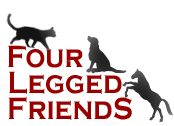
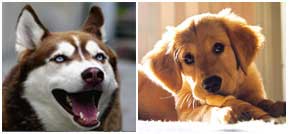
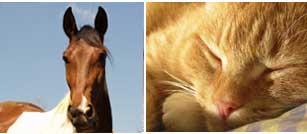
![]() Home
Home
![]() Dogs
Dogs
![]() Cats
Cats
![]() -
Cat breeds
-
Cat breeds
![]() -
- Bengal Cats
-
- Bengal Cats
![]() -
- Maine Coons
-
- Maine Coons
![]() -
- Scottish Folds
-
- Scottish Folds
![]() -
Cat training
-
Cat training
![]() -
Cat health
-
Cat health
![]() -
Cat rescue
-
Cat rescue
![]() -
Letting Go
-
Letting Go
![]() Horses
Horses
![]() Animal
rescue
Animal
rescue
![]() About us
About us
![]() Site map
Site map
![]() Contact us
Contact us
Feline Fury
Even the friendliest of felines can have her off days. What causes your
usually docile and loving cat to get her claws out?
Crazy for Cat Nip
Not all cats are crazy for cat nip but for those which are it is an
irresistable and harmless indulgence - in moderation, of course.
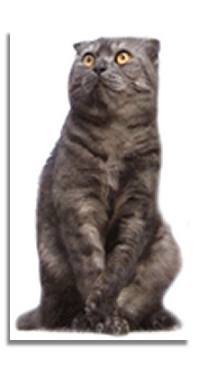 The Scottish Fold
The Scottish Fold
The first Scottish fold appeared on a farm in Scotland, near the village of Coupar Angus in 1961. A local shepherd noticed a shorthaired white cat had strangely folded ears and it is from this cat named Susie that all Folds today can trace their heritage. The ears fold through a spontaneous and inheritable defect in the mesoderm. This change gene whilst dominant is an incomplete dominant i.e. it has to be present in one parent for the offspring to have folded ears.
General Appearance:
The Scottish Fold is matched with a distinctive “look” and personality. When you think about a Fold think Round, the head, eyes and muzzle should be round. The body should be medium with a medium to long tail but in proportion to the body. The tail should be flexible and tapering. The coat should be dense, plush medium soft.
Its crowning glory, the Scottish Fold’s ears, come in all degrees of folds ranging from medium-sized “perk” ears to the cherished small, tightly folded ear. The Fold may have either a long or short coat and can be bred in over 40 different colours the same as the British Shorthair.
Their large round eyes and folded ears, coupled with expressive looks, intelligence and inquisitive nature make them a wonderful extension to the family home.
Temperament:
The Scottish Fold is a very unique and delightful cat with a sweet temperament very similar to the British and are often described as being hardy, good-natured, calm affable, loyal, intelligent, reserved, prosaic, stolid, loving, untemperamental, tranquil, dignified, independent and affectionate. They are not vocal cats and in fact are very quiet and can cope with being alone without fretting. They are not inclined to wander. They love children and get along extremely well with dogs.
Breeding and Genetics:
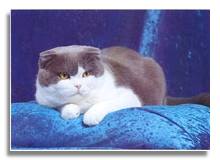 Dedicated Australian breeders over the past ten years have established
a breeding programme and gained recognition as a pedigree breed with
most Cat Fancy organisations. Breeding Scottish Folds requires special
knowledge and patience in the breeding programme.
Dedicated Australian breeders over the past ten years have established
a breeding programme and gained recognition as a pedigree breed with
most Cat Fancy organisations. Breeding Scottish Folds requires special
knowledge and patience in the breeding programme.
The kittens are not born with folded ears and not all kittens' ears will fold. The kittens with pert ears are called Scottish Shorthairs. The kittens that carry the gene will start to fold at 2-3 weeks. The folding process begins to crimp at the outer edge of the ear then gradually tightens and the tips fold downward into the head, giving the appearance of the ears sliding off the top of the head.
There are different types of ear folding: the single fold, the loose in back, front-in-tight fold, cropped to the head fold, the double tight fold and capped to the head fold (which is the most desirable).
They require minimal care to maintain health and vigor. They are a treasure to own and will provide the family with lots of love and entertainment for many years.
Many thanks to Robbie Walker of Glencairn Cattery in Australia for both the description of a Scottish Fold and the lovely pictures of two of Glencairn's champions.
Cats too have their dedicated breed rescues. If you are considering adding a Scottish Fold to your family, you might want to look up some of the adorable cats and kittens available through rescue.
U.S
Florida: Scottish Fold Rescue Alliance
Nebraska: The Cat House
More references to Scottish Fold rescue organisations would be welcome. Please email with any information you would like to see added to this site.
Maine Coons Gentle GiantsAs well as being very handsome, the Maine Coons are a hardy, low maintenance breed. Scottish FoldsThe Scottish Fold is a very unique and delightful cat with a sweet temperament very similar to the British and are often described as being hardy, good-natured, calm affable, loyal...
|